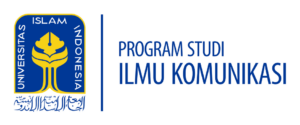Yogyakarta: The Capital City of Indonesian Films (1946-1949)
On January 4, 1946, a secret carriage group containing Soekarno and his friends arrived at Tugu Train Station, Yogyakarta. Their arrival marked the move of the capital from Jakarta which had been occupied by Allied forces from NICA (Nederlandsch Indië Civiele Administratie) to Yogyakarta.
The Indonesian government moved several Indonesian Ministries to Yogyakarta, including the Ministry of Information, which was then followed by the Indonesian Film Agency (BFI). The transfer of the two institutions prompted artists and republican sympathizers to also move to Yogyakarta. This incident made Yogyakarta at that time not only the center of Indonesian government, but also the center of arts and cinema in Indonesia.
Four Key Actors
“There are four important actors in Yogyakarta as the capital of Indonesian films: the Indonesian Film Agency, the Ministry of Information, Mataram Entertainment, and Kino Drama Atelier,” said Dyna Herlina Suwarto on Saturday, April 24, 2021. Dyna speaks in the discussion entitled Yogyakarta as the Capital City of Indonesia’s Film. This webinar is held by the collaboration of the PSDMA Nadim and KNSK. PSDMA Nadim is stands for Center for Alternative Media Studies and Documentation (PSDMA) Nadim Department of Communications UII. KNSK is stands for National Consortium for History of Communication (KNSK).
The Speaker who is familiarly called Dyna is a lecturer in the Communication Department at Yogyakarta State University. She is also founder of Rumah Sinema, and NGO who is focused on youth and media literacy. She is also active in the Indonesian Film Reviewers Association (KAFEIN). Currently, Dyna is undertaking doctoral studies in Film and Television Studies, University of Nottingham.
Dyna stated that Yogyakarta in 1946-1949 could be called the media capital, because Yogyakarta was considered a safe place that allowed economic, knowledge, cultural and political interactions. Creative actors from various parts of Indonesia also interact with each other and expand local, national and international networks. Finally, the relatively stable conditions in Yogyakarta allow for capital accumulation, market expansion and distribution systems.
Media Capital
When the media capital discussed by Michael Curtin was initiated by the private sector, Yogyakarta as the media capital was actually owned by the state as the main actor.
“In modern media capital , as mentioned by Curtin, the objective is financial accumulation. Meanwhile at that time in Jogja the main objective of media or films produced at that time was politics. Recognition of Indonesia’s independence and sovereignty as well as the accumulated knowledge of the film production industry itself,” said Dyna who also active in the Jogja-NETPAC Asian Film Festival (JAFF).
There are several films that are important to discuss in the Yogyakarta era from 1946 to 1949. One of the documentary film produced by the Indonesian Film Agency is Indonesia Fight for Freedom. This film was brought to the United Nations to gain recognition of Indonesian sovereignity. Apart from films, the establishment of film academies Cinedrama Institute and Kino Drama Atelier is also significant. These film academies has also become a milestone in the development of film in Indonesia.
Although in the end the Dutch attacked Yogyakarta on December 19th, 1948 and brought the film to a halt at that time, this era has become an interesting piece of film history in Indonesia.
——–
Reporter and Author: Rizky Eka Satya, UII Department of Communication’s student, Class of 2015. Internship at PSDMA Nadim at Department of Communications UII.
Editor: A. Pambudi W.




